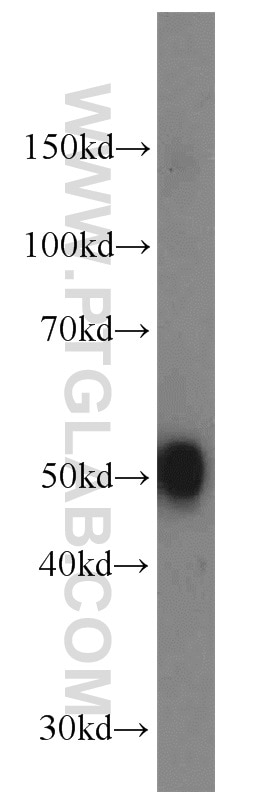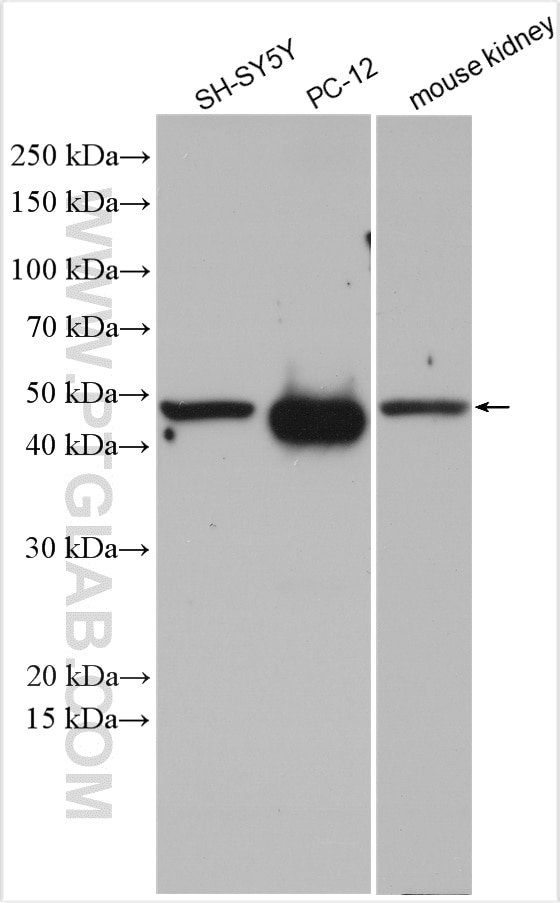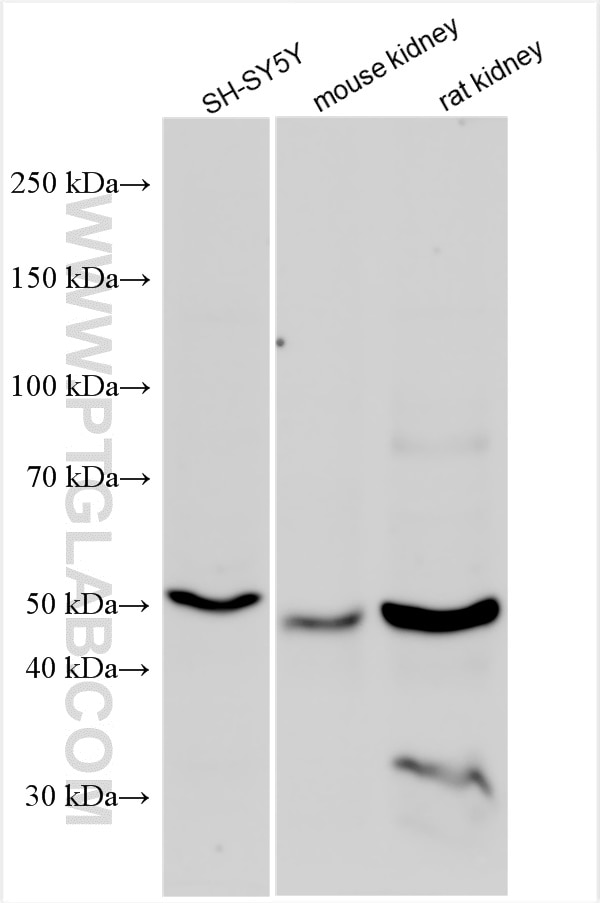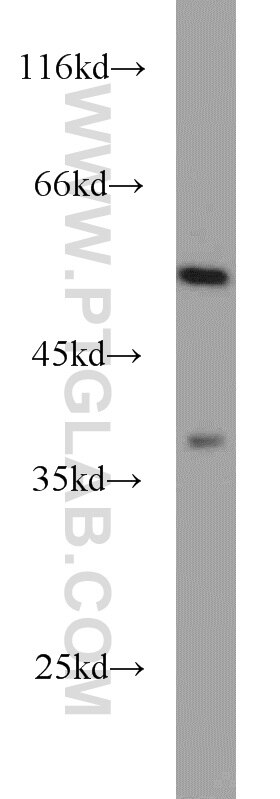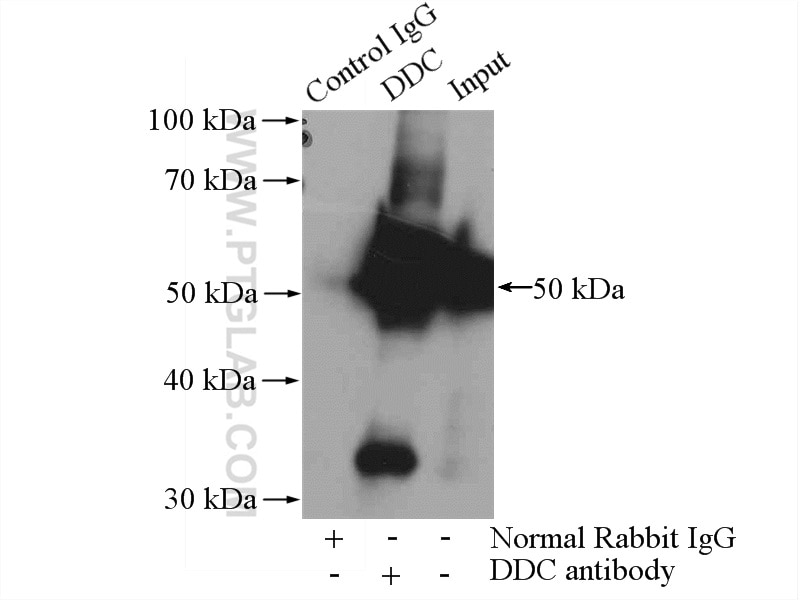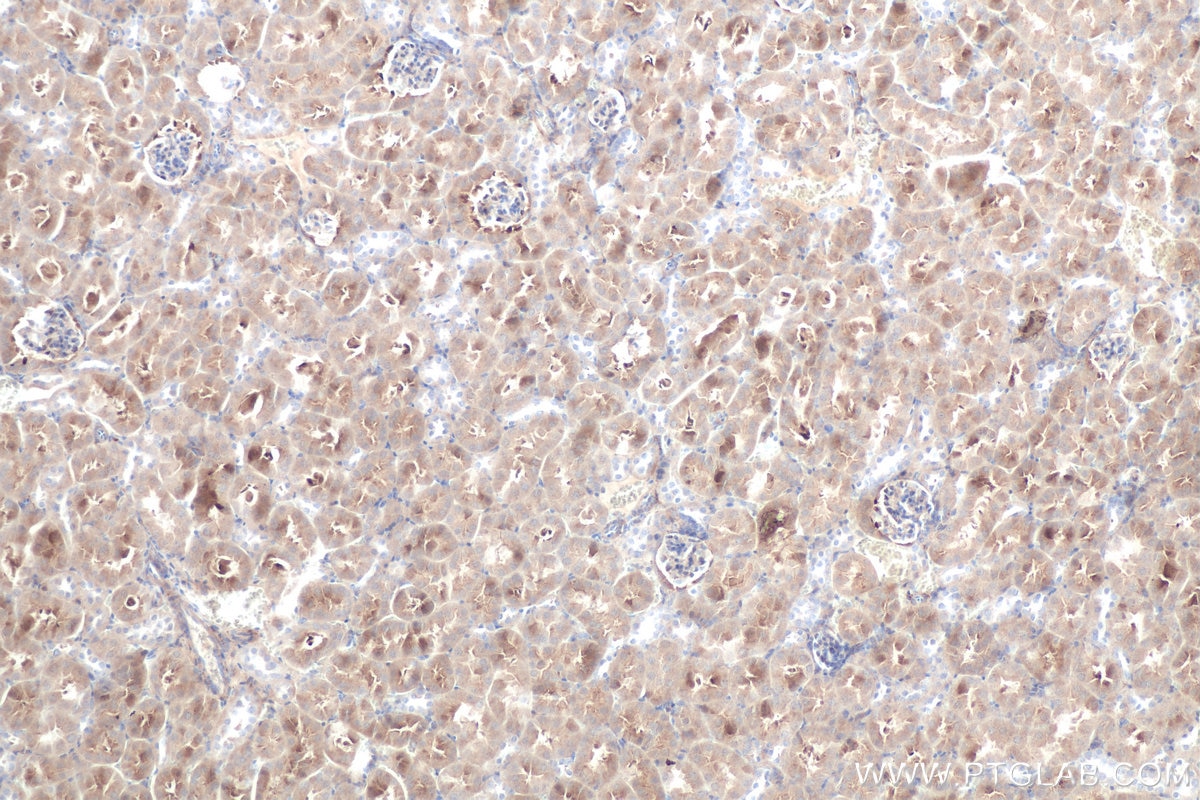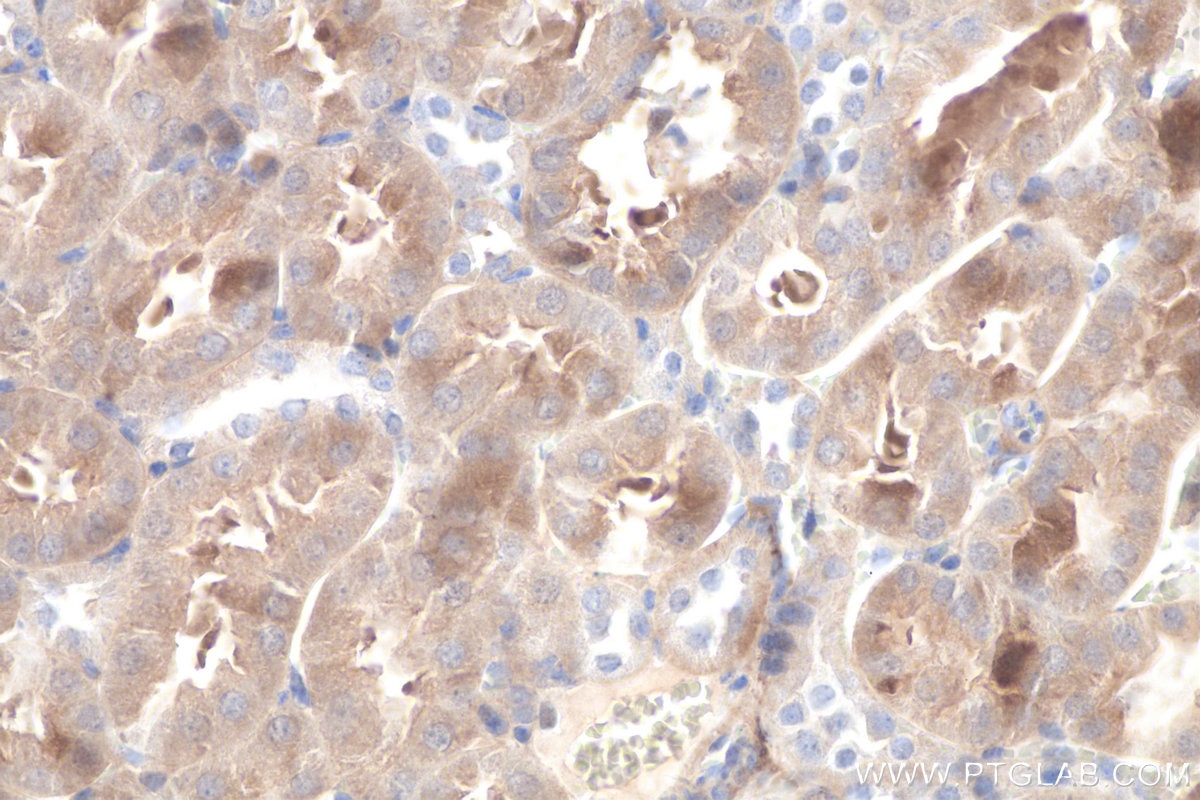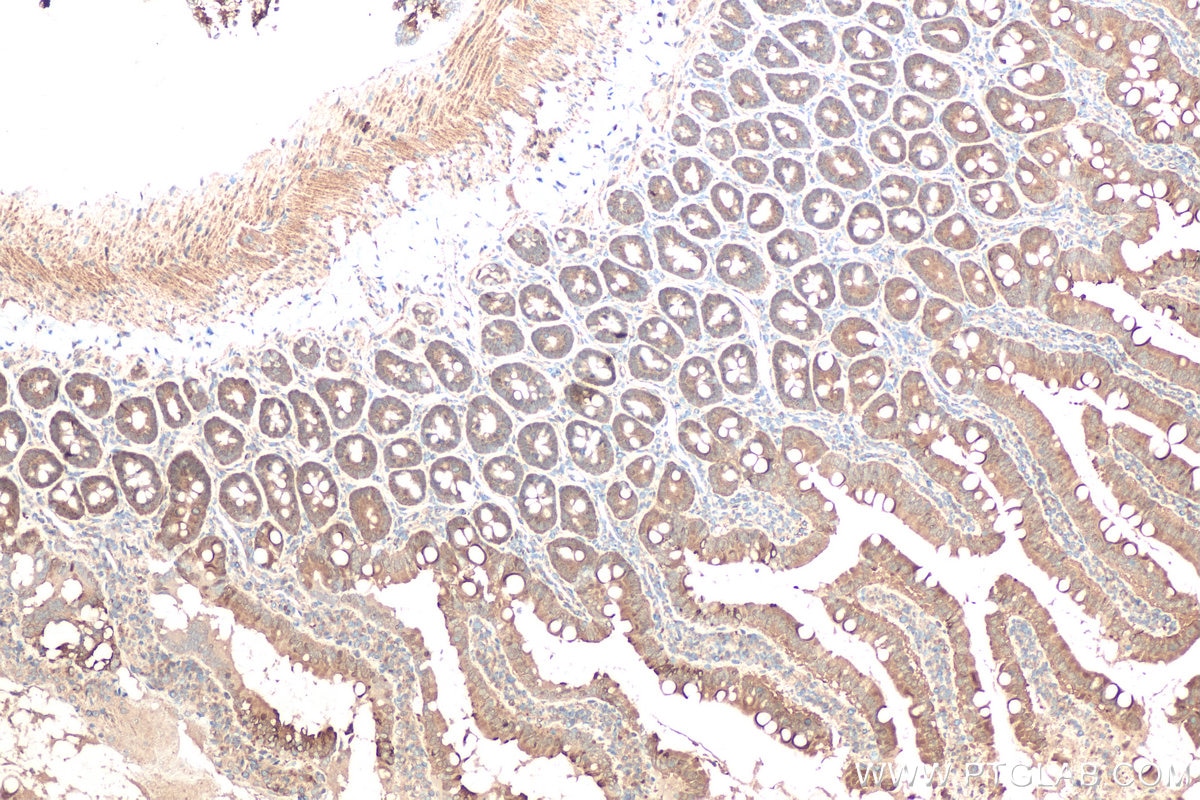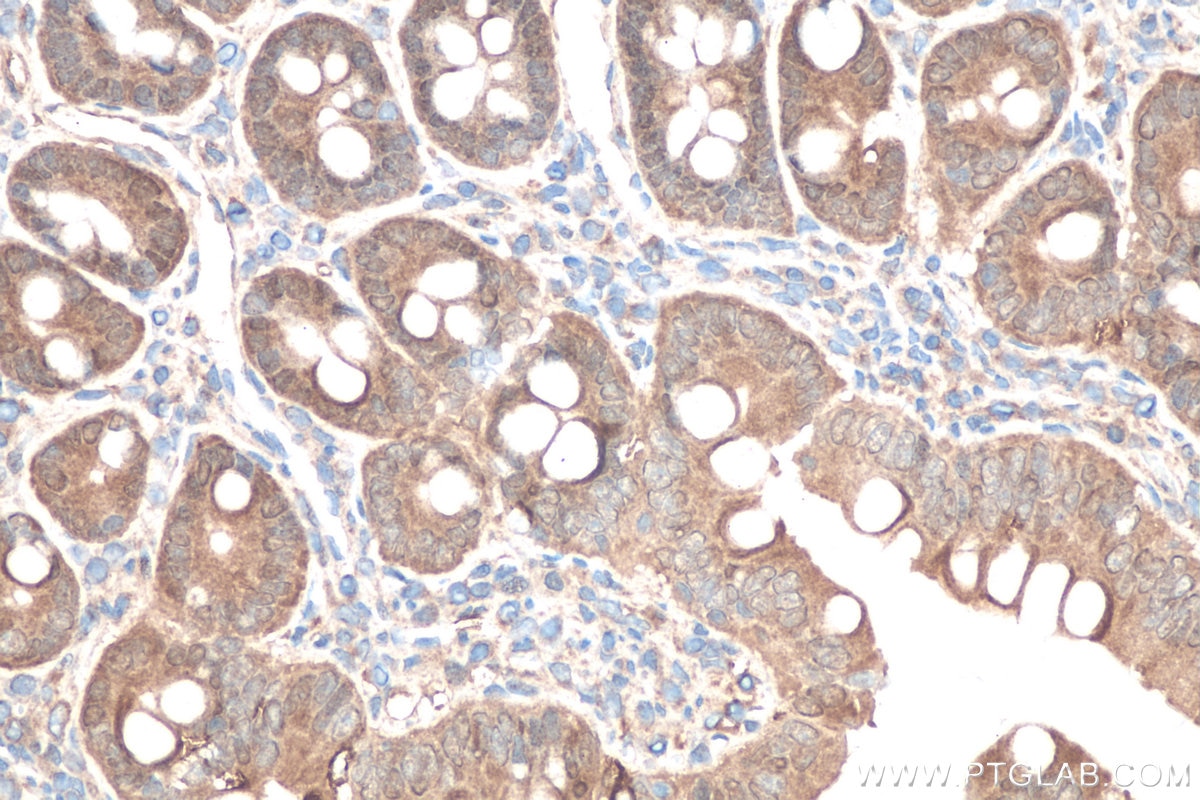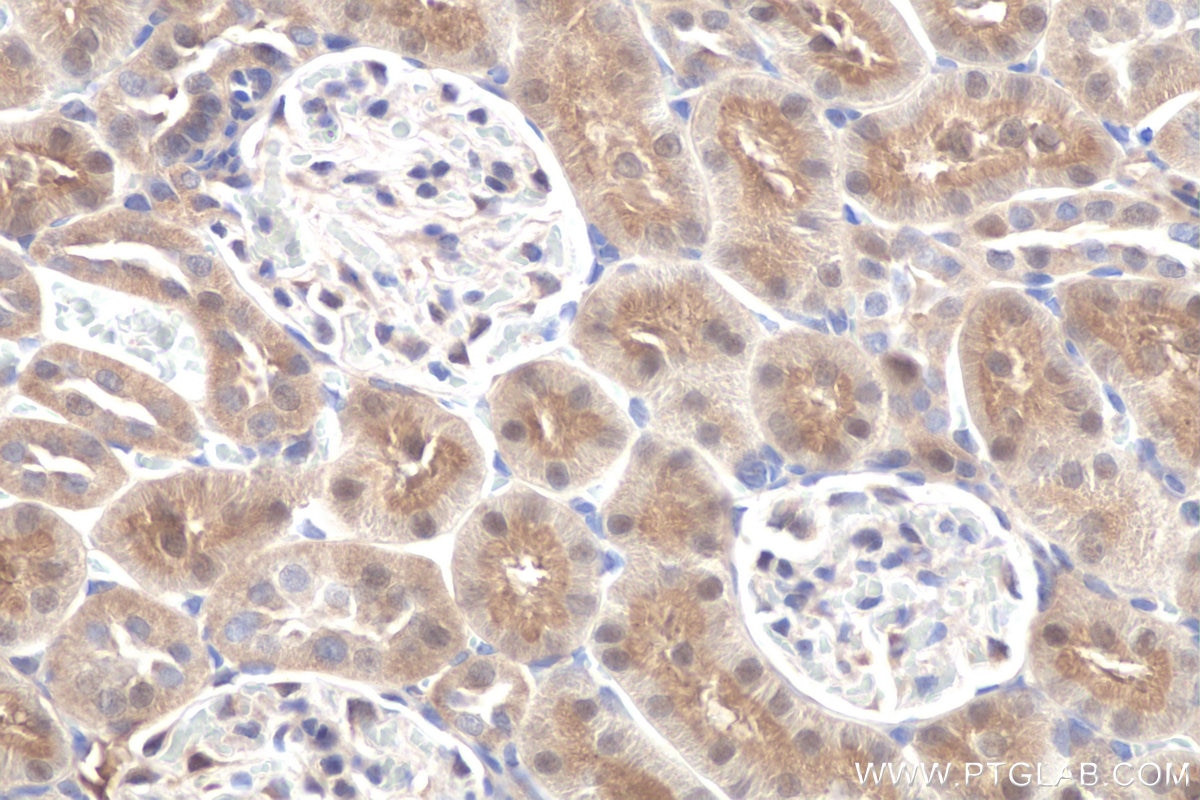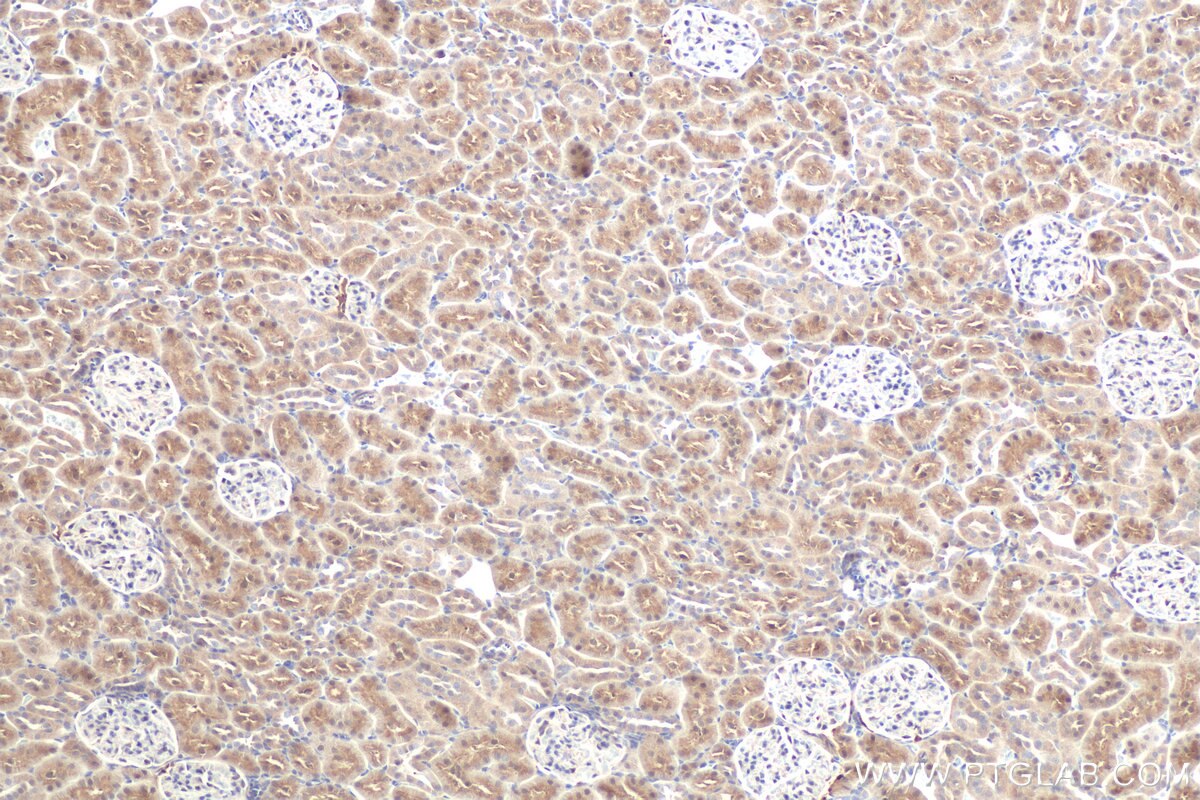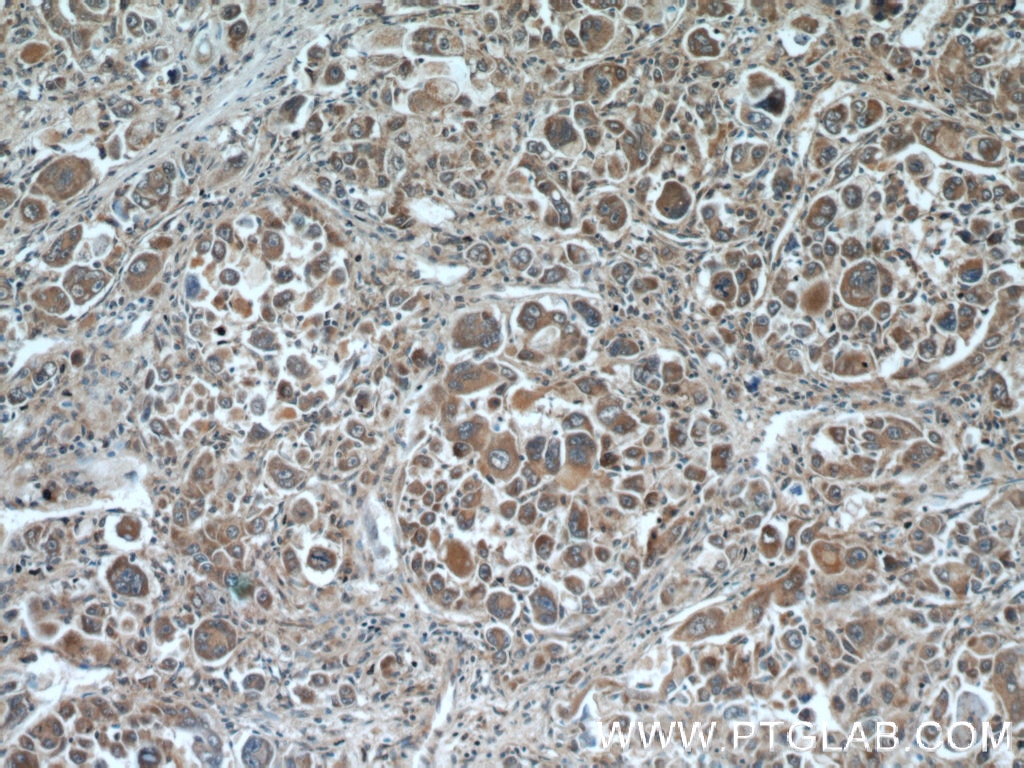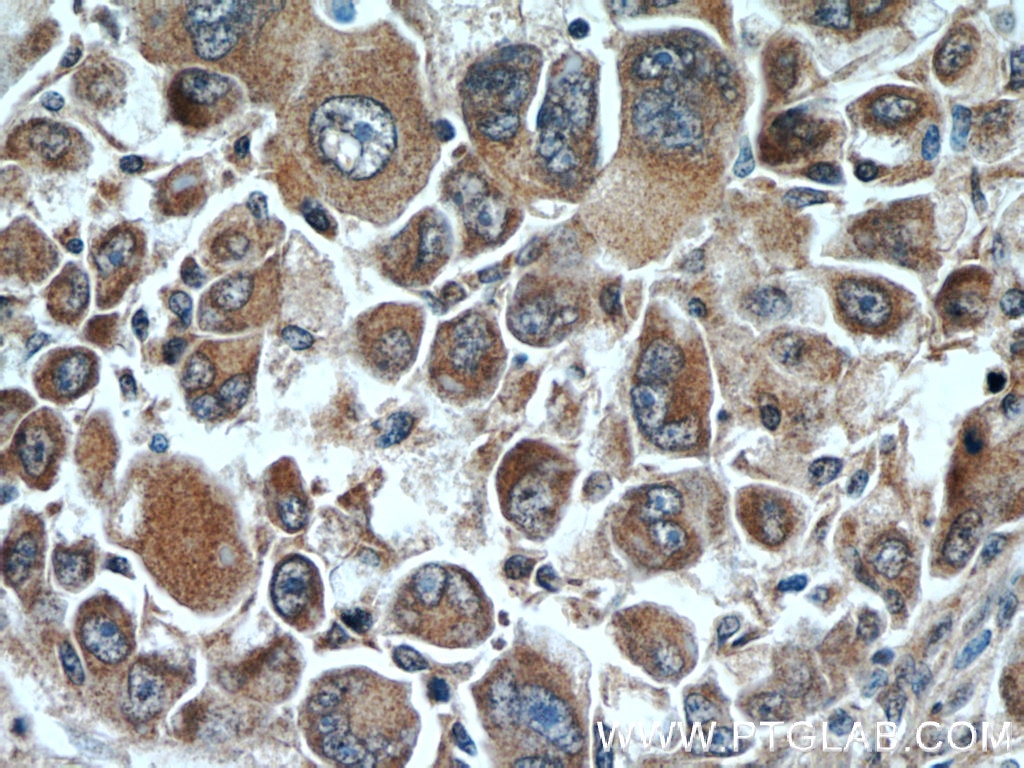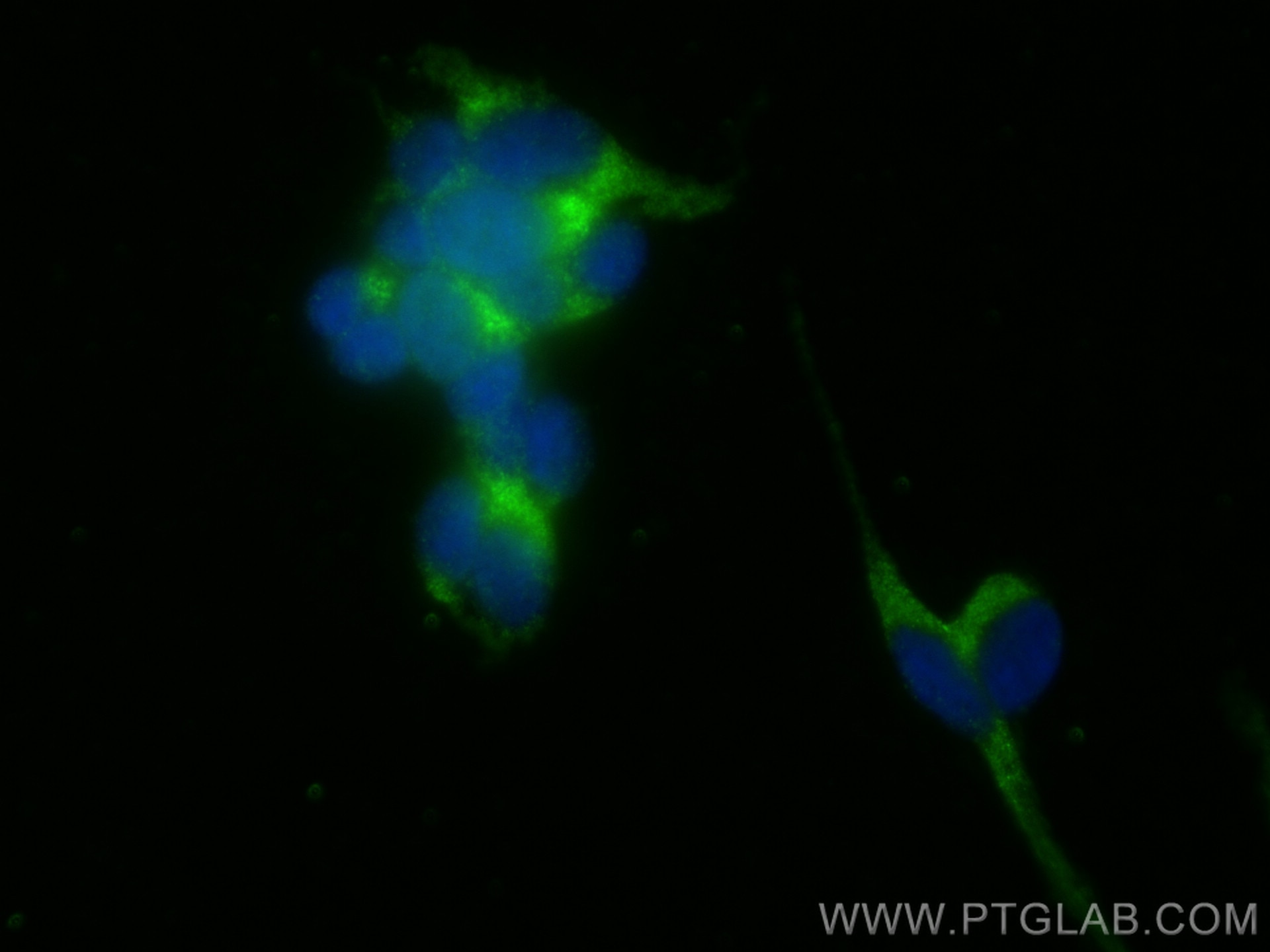Anticorps Polyclonal de lapin anti-DOPA decarboxylase/DDC
DOPA decarboxylase/DDC Polyclonal Antibody for WB, IHC, IF/ICC, IP, ELISA
Hôte / Isotype
Lapin / IgG
Réactivité testée
Humain, rat, souris
Applications
WB, IHC, IF/ICC, IP, ELISA
Conjugaison
Non conjugué
N° de cat : 10166-1-AP
Synonymes
Galerie de données de validation
Applications testées
| Résultats positifs en WB | cellules SH-SY5Y, cellules PC-12, tissu cérébral de souris, tissu rénal de rat, tissu rénal de souris |
| Résultats positifs en IP | tissu cérébral de souris |
| Résultats positifs en IHC | tissu rénal de souris, tissu de cancer du foie humain, tissu d'intestin grêle de rat, tissu rénal de rat il est suggéré de démasquer l'antigène avec un tampon de TE buffer pH 9.0; (*) À défaut, 'le démasquage de l'antigène peut être 'effectué avec un tampon citrate pH 6,0. |
| Résultats positifs en IF/ICC | cellules SH-SY5Y, |
Dilution recommandée
| Application | Dilution |
|---|---|
| Western Blot (WB) | WB : 1:500-1:3000 |
| Immunoprécipitation (IP) | IP : 0.5-4.0 ug for 1.0-3.0 mg of total protein lysate |
| Immunohistochimie (IHC) | IHC : 1:500-1:2000 |
| Immunofluorescence (IF)/ICC | IF/ICC : 1:200-1:800 |
| It is recommended that this reagent should be titrated in each testing system to obtain optimal results. | |
| Sample-dependent, check data in validation data gallery | |
Applications publiées
| WB | See 5 publications below |
| IHC | See 7 publications below |
| IF | See 2 publications below |
Informations sur le produit
10166-1-AP cible DOPA decarboxylase/DDC dans les applications de WB, IHC, IF/ICC, IP, ELISA et montre une réactivité avec des échantillons Humain, rat, souris
| Réactivité | Humain, rat, souris |
| Réactivité citée | rat, Humain, souris |
| Hôte / Isotype | Lapin / IgG |
| Clonalité | Polyclonal |
| Type | Anticorps |
| Immunogène | DOPA decarboxylase/DDC Protéine recombinante Ag0219 |
| Nom complet | dopa decarboxylase (aromatic L-amino acid decarboxylase) |
| Masse moléculaire calculée | 54 kDa |
| Poids moléculaire observé | 48-50 kDa |
| Numéro d’acquisition GenBank | BC008366 |
| Symbole du gène | DOPA decarboxylase |
| Identification du gène (NCBI) | 1644 |
| Conjugaison | Non conjugué |
| Forme | Liquide |
| Méthode de purification | Purification par affinité contre l'antigène |
| Tampon de stockage | PBS with 0.02% sodium azide and 50% glycerol |
| Conditions de stockage | Stocker à -20°C. Stable pendant un an après l'expédition. L'aliquotage n'est pas nécessaire pour le stockage à -20oC Les 20ul contiennent 0,1% de BSA. |
Informations générales
DOPA decarboxylase (DDC), also known as aromatic l-amino acid decarboxylase, belongs to the pyridoxal-dependent aminotransferase superfamily (PMID: 38467937). DDC is an enzyme that converts levodopa into dopamine, the latter being severely depleted in LBD due to the loss of dopaminergic neurons in the substantia nigra (PMID: 28751068). DDC plays an important role in the dopaminergic system and participates in the uptake and decarboxylation of amine precursors in the peripheral tissues (PMID: 28100850). It is reported that DDC may be a novel and potential marker for the detection of peritoneal micrometastases of gastric cancer (PMID: 14760382).
Protocole
| Product Specific Protocols | |
|---|---|
| WB protocol for DOPA decarboxylase/DDC antibody 10166-1-AP | Download protocol |
| IHC protocol for DOPA decarboxylase/DDC antibody 10166-1-AP | Download protocol |
| IF protocol for DOPA decarboxylase/DDC antibody 10166-1-AP | Download protocol |
| IP protocol for DOPA decarboxylase/DDC antibody 10166-1-AP | Download protocol |
| Standard Protocols | |
|---|---|
| Click here to view our Standard Protocols |
Publications
| Species | Application | Title |
|---|---|---|
Cell Signal Profile of 5-HT2A receptor involved in signaling cascades associated to intracellular inflammation and apoptosis in hepatocytes and its role in carbon tetrachloride-induced hepatotoxicity | ||
Dis Model Mech A Matrigel-based 3D construct of SH-SY5Y cells models the α-synuclein pathologies of Parkinson's disease. | ||
J Transl Med Retinal pigment epithelial cells secrete neurotrophic factors and synthesize dopamine: possible contribution to therapeutic effects of RPE cell transplantation in Parkinson's disease. | ||
Toxicol Appl Pharmacol Carbon tetrachloride induced mitochondrial division, respiratory chain damage, abnormal intracellular [H+] and apoptosis are due to the activation of 5-HT degradation system in hepatocytes. |
